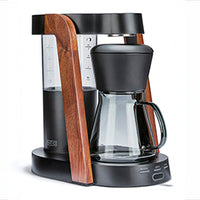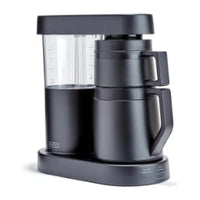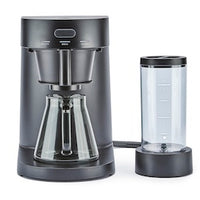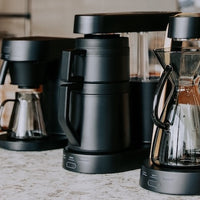You’ve Been Making Iced Coffee Wrong (It’s Not Just Coffee + Ice)
Key Takeaways
-
Pouring hot coffee over ice causes instant dilution — brew directly over ice instead
-
Use a stronger coffee-to-water ratio (1:14 or 1:13) to preserve flavor after chilling
-
Brew methods matter: pour-over and AeroPress work best for iced coffee; avoid reheated leftovers
-
Ice quality impacts taste — use filtered water and large cubes, or freeze coffee as ice cubes
-
Rapid chilling and proper brewing technique preserve flavor and prevent bitterness
Iced coffee seems simple. Brew your favorite hot coffee, pour it over ice, and done — right? Not quite.
If your iced coffee tastes watery, bitter, sour, or just off — it’s not your beans. It’s likely your method. Because while “coffee + ice” sounds foolproof, the science of great iced coffee is a bit more precise.
In fact, the way you brew, chill, and serve your iced coffee can make the difference between a refreshing, flavorful cup and a disappointing puddle of melted compromise.
Let’s break down what most people get wrong, and how to get it just right.
Mistake #1: Pouring Hot Coffee Over Ice
This is the classic move — and the most problematic one. When you brew hot coffee and immediately pour it over ice:
-
The ice melts instantly
-
Your drink dilutes fast
-
The temperature shock can alter taste
The result? A weak, lukewarm brew that tastes like regret.
A better approach: Brew directly over ice
This is called Japanese-style iced coffee — where you use a pour-over or drip method, but replace some of the water volume with ice in the carafe.
For example:
-
Use 30g coffee, 300g total water volume
-
Brew with 200g hot water, 100g ice in the bottom vessel
This method locks in flavor and chills the coffee instantly without watering it down.
Mistake #2: Using the Wrong Ratio
Hot coffee has more wiggle room when it comes to strength — you can adjust on the fly. But iced coffee is unforgiving.
Dilution from ice and chilling alters everything.
Tip: Brew it stronger
Aim for a slightly more concentrated brew:
-
1:14 or 1:13 coffee-to-water ratio
-
Or brew a concentrate and dilute with ice or milk later
This ensures your flavor holds up even after the ice starts to melt.
Mistake #3: Ignoring Brew Method
Not all brew methods work equally well for iced coffee. Some shine cold, others suffer.
Best methods for iced coffee:
-
Japanese iced pour-over: Preserves aromatics and acidity
-
Cold brew: Smooth, mellow, less acidic (but takes time)
-
AeroPress over ice: Fast, punchy, concentrated
-
Flash-chilled drip: Similar to pour-over, brewed directly over ice
Methods to be cautious with:
-
French press: Can be muddy or too heavy when cooled
-
Reheated leftovers: Flat, stale, oxidized — just skip it
Choose your method based on the flavor and texture you want. Bright and crisp? Go pour-over. Smooth and chocolatey? Cold brew.
Mistake #4: Using Stale Coffee
Temperature changes amplify flaws. Iced coffee made with stale or oxidized beans will taste worse than it does hot.
Always use freshly roasted beans, and grind right before brewing. Bright, fruity, or floral coffees often perform best over ice.

Mistake #5: Skipping the Ice Quality
Yes, your ice matters.
Low-quality ice (freezer-burned, cloudy, or tasting like the frozen peas next door) will taint your cup. It’s literally part of the drink.
Pro tip:
-
Use filtered water for ice
-
Freeze large cubes to slow melt
-
Try coffee ice cubes to avoid dilution entirely
Mistake #6: Confusing Iced Coffee With Cold Brew
Iced coffee and cold brew are not the same thing. They differ in:
-
Brew time: Hot coffee is fast; cold brew takes 12–24 hours
-
Taste: Cold brew is smooth, low acid, chocolatey
-
Strength: Cold brew is often a concentrate
Cold brew has its place — but if you want a quick, bright, complex iced coffee, go hot-brewed over ice.
Mistake #7: Forgetting to Chill Properly
Leaving hot coffee out to cool, then refrigerating it later, leads to oxidized, stale flavors. Coffee degrades quickly when left warm and exposed to air.
Instead:
-
Brew directly over ice
-
Or cool hot coffee rapidly in a sealed container
-
Use a flash-chill technique (swirl in metal container over ice bath)
Speed is your friend when it comes to flavor preservation.
Iced Coffee, Done Right
When you brew iced coffee properly, you unlock its full potential: crisp, refreshing, bold yet clean.
Use good water, fresh beans, the right ratios, and chill it fast. Pay attention to your method. Think of ice as an ingredient — not an afterthought.
Even modern machines like those from Ratio Coffee can help you start with a high-quality hot brew, giving you the precision and consistency needed to create an excellent base for iced versions. Just make sure you’re controlling for dilution and temperature.
If you’ve been disappointed with your iced coffee in the past, it’s not because you don’t like iced coffee. You just haven’t had it done right yet.
Frequently Asked Questions
Can I use any coffee beans for iced coffee?
Yes, but beans with brighter notes (fruit, citrus, floral) often shine when chilled. Avoid stale or flat-tasting beans.
Is cold brew better than iced coffee?
Not necessarily — just different. Cold brew is smoother and lower in acidity, while iced coffee can be more complex and aromatic.
How long does iced coffee last in the fridge?
Freshly brewed iced coffee is best within 24 hours. After that, oxidation dulls the flavor.
Can I brew directly over ice with a drip machine?
Yes, if the machine allows you to control water volume and temperature. Just reduce hot water and add ice to the carafe.
Does Ratio Coffee support iced coffee brewing?
Ratio Coffee brewers provide consistent hot brews that can serve as an ideal base for Japanese-style iced coffee. Just adjust your ratios and cool the coffee fast for best results.
 Ratio Eight S2
Ratio Eight S2
 Ratio Eight Original
Ratio Eight Original
 Ratio Six
Ratio Six
 Ratio Four
Ratio Four
 Compare Machines
Compare Machines






